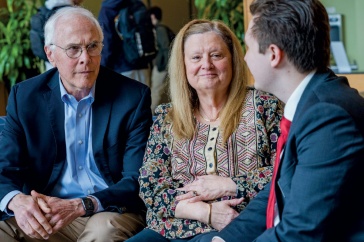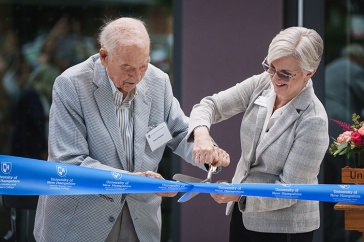
For Jacob Moore ’18, the summer of 2015 was 72 straight days of awesomeness—or to put it more academically, it was all about research, discovery, learning and making connections.
Moore was the recipient of a donor-sponsored scholarship that allowed him to study at the Shoals Marine Laboratory, the unique research and residential facility on Appledore Island, 10 miles off the coast of Maine and New Hampshire. He describes the classes and experiences as unlike anything he’s ever done before.
The summer at Appledore meant that Moore, a marine, estuarine and freshwater biology major, wasn’t learning only from faculty in those disciplines, but from local fishermen, scientists and fisheries experts about the complex issue of sustainable marine fisheries and the future of the fishing industry.
These real-time, real-world issues are the foundation of the Shoals Lab. “This is where students become scientists,” says Jennifer Seavey, executive director of the lab.
From unique student experiences like Jacob’s to the infrastructure improvements made recently on the island, donors help keep the facility operating and evolving each season. And donor impact was especially visible in the summer of 2015, as the SML marked the expansion of the solar array with 94 new donor funded panels that have increased the island’s solar energy capacity to 56 kilowatts. The solar panels, coupled with this year’s installation of energy efficient lights and appliances have decreased SML’s diesel fuel consumption by more than 80 percent to just 1,500 gallons this year.
Another milestone this summer was the tenth anniversary of the sustainable engineering internship program, which brings four undergraduates in engineering programs from UNH and universities across the country to Appledore to study the island’s infrastructure and research how to improve SML’s resource usage.
Engineers Tom Johnson and Mike Dalton ’64 were instrumental in initiating the green grid and engineering internships 10 years ago, and continue to serve as mentors to the engineering interns.
“When we started the sustainable engineering internship to study the infrastructure required to run remote and seasonal programs, we had a vision but had no idea where it would lead,” says Johnson. “Now, 10 years later, we can look at the island-wide improvements and realize the significant benefits to the long-term success of SML.”
-
Written By:
Michelle Morrissey ’97 | UNH Magazine | michelle.morrissey@unh.edu

















































